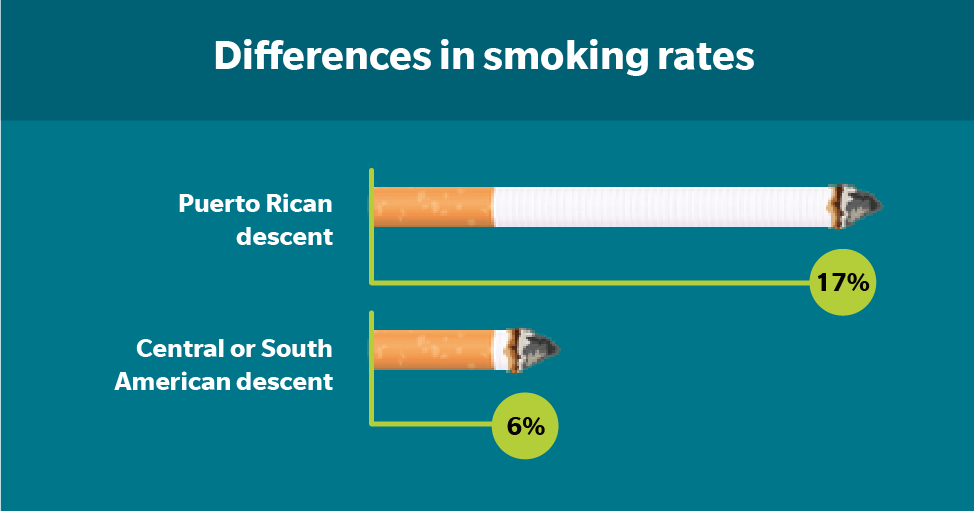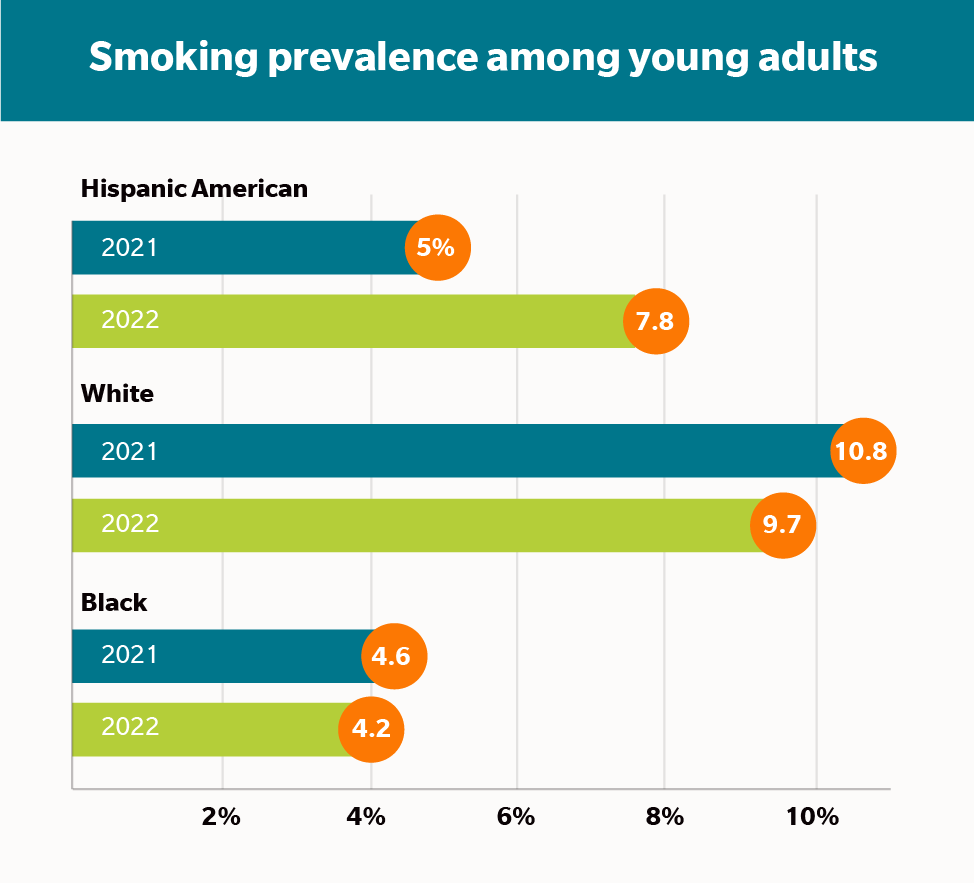National Hispanic Heritage Month 2024, spanning from Sept. 15 to Oct. 15, celebrates Hispanic and Latino history, culture, and the achievements of Hispanic and Latino Americans.
Hispanic Heritage Month can also be a time to reflect on ways to help people who identify with Hispanic, Latino, LatinX, or other similar cultures improve their health. Giving Spanish-speaking adults a quit vaping and smoking program in their primary language can help employers and health plans remove barriers to critical support.
Prevalence varies among subgroups
Although American people in Hispanic and Latino communities generally report a lower prevalence of cigarette smoking compared to national averages, smoking prevalence varies drastically by subgroups within this population.
Compared to a 6% smoking rate among American people from Central or South American descent, people from Puerto Rican descent, for example, have a 17% smoking rate.
And among Hispanic American young adults, the smoking rate is on a concerning rise.
Unfortunately, people who identify as Hispanic or Latino who smoke have lower odds of receiving cessation advice from a health professional than other populations. There could be several reasons why.
For starters, people with South or Central American or Mexican heritage are less likely than other Americans to have seen a healthcare provider recently and to have a primary care provider. Healthcare providers can help influence behavior change and approximately 57% of American adult cigarette smokers report having their healthcare provider give advice to quit smoking.
For adults who are not fluent in English, it can be difficult to communicate concerns to a healthcare provider even when they do visit. Most people identifying as Hispanic American (71%) speak a language other than English at home, and 28% say they are not fluent in English.
Income and concerns about healthcare costs could be yet another barrier to accessing tobacco cessation support, particularly among recent immigrants. Among full-time, year-round workers, the average median household income for Hispanic/Latino households was $55,321 in comparison to $74,912 for non-Hispanic White households.
By offering easy-access support to quit vaping and smoking in Spanish, you can help extend the reach of evidence-based resources to a population of nearly 42 million.
Why digital quit-tobacco programs in Spanish are vital
People who smoke and/or vape can benefit from proven tools to help them quit. But offering a program that addresses the social, physical, and psychological aspects of tobacco addiction is just the start.
Using promotions in Spanish to proactively outreach to people who feel more comfortable communicating in their first language is what ultimately can make the difference in engagement—and abstinence—rates.
That’s why, in addition to offering EX Program in Spanish, we help clients leverage our suite of Spanish promotions, too.
EX Program is entirely available in Spanish, including web content, text messaging, and live chat coaching. And our support is designed in ways that address cultural nuances, language proficiency, and technology preferences, too. As part of our program, we can also send emails in Spanish to our clients’ eligibility lists and provide an entire portfolio of assets (flyers, posters, social posts, and more) to use as well.
Contact us today to start a conversation about how we can help more of your population use our quit vaping and smoking support in Spanish. Or, click here to see a short demo of how EX Program works and how we partner with employers and health plans to successfully engage members.






